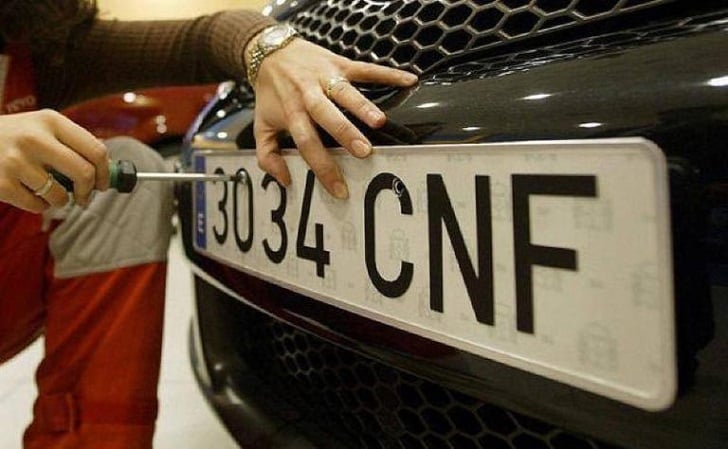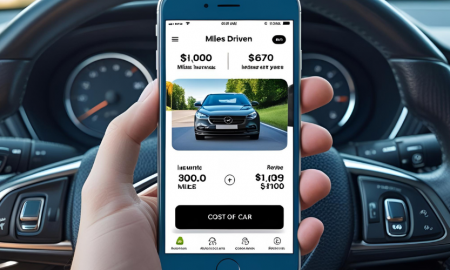
How to Put a License Plate on a Car: The Ultimate Beginner’s Guide

Installing a license plate on a car is an essential skill for every driver. Whether you’ve just received new plates or need to replace old ones, knowing how to put a license plate on a car ensures that you’re always road-ready and legal. This guide provides a clear, step-by-step process to help you easily accomplish this task.
How to Put a License Plate on a Car in 7 Simple Steps
1. Gather Your Tools and Supplies
Before starting, ensure you have everything you need. Typically, this includes a Phillips or flathead screwdriver, your new license plate, and the appropriate screws. For new vehicles, these screws might be found in the glove compartment or center console. Having everything prepared will make the installation process smooth and efficient.

Ignacio Gregoroff | MSN | Before starting, ensure you have everything you need to attach the license plate.
2. Remove the Old License Plate
Begin by removing the existing plate. Use your screwdriver to unscrew the bolts holding the plate in place. Turn the screws counterclockwise to loosen them. Once the screws are out, place them in a safe spot, as you’ll need them to attach the new plate. Carefully take off the old plate and set it aside.

Ailén Laurens | MSN | Use your screwdriver to unscrew the bolts holding the existing plate in place.
3. Align the New License Plate
Take your new license plate and position it so that the pre-drilled holes align with those on your vehicle’s bumper. Ensuring a proper alignment will make the attachment process straightforward and secure.
4. Attach the New License Plate
Using the screws you removed earlier, start securing the new plate. Insert the screws through the holes in the plate and into the vehicle’s bumper. Turn the screws clockwise until the plate is firmly attached. Be cautious not to overtighten, as this can strip the screws or damage the plate.
5. Affix the Expiration Date Sticker
Depending on your state’s requirements, you’ll need to place an expiration date sticker on the new plate. Typically, this sticker goes in the upper left or right corner of the plate. Some states may require you to place this sticker on the windshield instead, so check your local regulations to be sure.
6. Store Your Vehicle’s Registration
Once your new license plate is securely attached, place your vehicle’s registration receipt in the glove box along with your owner’s manual and insurance card. Keeping these documents handy ensures you have proof of registration and insurance available if needed.
7. Final Check
After completing the installation, give the plate a final check. Ensure that it is secure and positioned correctly. This quick verification step guarantees that your plate is properly mounted and ready for the road.
Tips for a Smooth Installation
- Check State Requirements: Different states have specific guidelines for license plate placement and sticker application. Always verify your state’s requirements to ensure compliance.
- Keep Extra Screws Handy: Over time, screws can become worn or lost. Having extras on hand can save time and frustration during installation.
- Use the Right Screwdriver: Using the appropriate screwdriver, whether Phillips or flathead, will make removing and attaching screws much easier and prevent damage to the screws or plate.
By following these steps, installing a license plate on your car becomes a simple task that can be completed in minutes. Proper installation not only keeps you compliant with state laws but also ensures that your vehicle looks neat and well-maintained.
More inAdvice
-
`
Adults in Ohio Face Stricter Rules to Obtain Driver’s License
Ohio has passed a new law that will change the way adults under 21 get their driver’s licenses. Signed into law...
July 31, 2025 -
`
Gen Z Craves Career Guidance, But Their Parents Are Struggling Too
Gen Z is stepping into the future with curiosity and ambition—but they’re not doing it alone. A growing number of teens...
July 25, 2025 -
`
Do Car Insurance Companies Offer Pay-As-You-Go Plans?
Car insurance premiums often feel unfair to people who rarely drive. Yet, most traditional auto policies still charge a fixed monthly...
July 17, 2025 -
`
Why the Koenigsegg Sadair Spear Is the Ultimate Hypercar Beast
Koenigsegg has revealed a new beast—the Sadair’s Spear. Tuning its focus on raw performance and brutal speed, this hypercar marks the...
July 11, 2025 -
`
Which States Have the Safest—and Riskiest—Drivers in America?
Driving safety isn’t just about skill. It’s also about location. A recent nationwide report shines a spotlight on where drivers are...
July 4, 2025 -
`
How to Save on Tesla Car Insurance Without Compromising Coverage
Owning a Tesla often brings savings on fuel and a futuristic driving experience, but the conversation changes quickly when it comes...
June 26, 2025 -
`
10 Weird Cars That Turned Heads and Won Hearts
Some cars turn heads with speed, others with luxury—but a rare few grab your attention simply by being delightfully strange. From...
June 20, 2025 -
`
Next-Gen Jeep Cherokee Expected to Arrive by Late 2025
After a break of two years, Jeep is prepared to relaunch the Cherokee brand. The automaker confirmed the return with fresh...
June 12, 2025 -
`
9 Tips to Make Night Driving Safer and Less Frightening
Once the sun dips below the horizon, driving becomes more than just a commute—it becomes a challenge. Limited visibility, harsh glares,...
June 6, 2025
















You must be logged in to post a comment Login